
Tour the Landscapes & Landmarks worth seeing at the coast of Namibia in one day
At the coast of Namibia, the Ocean of dunes from the South meet the gravel plains of the Namib as well as the Atlantic ocean in a memorable symphony of awesome. It’s literally minutes from the one breathtaking landscape to the next, all day long. In this whirlwind of nature, man made it’s mark. You simply will love the wide variety and splendor that this area has to offer. What better way is there to explore such a thing than with a local guide on a private tour? Read on to see what’s on offer.
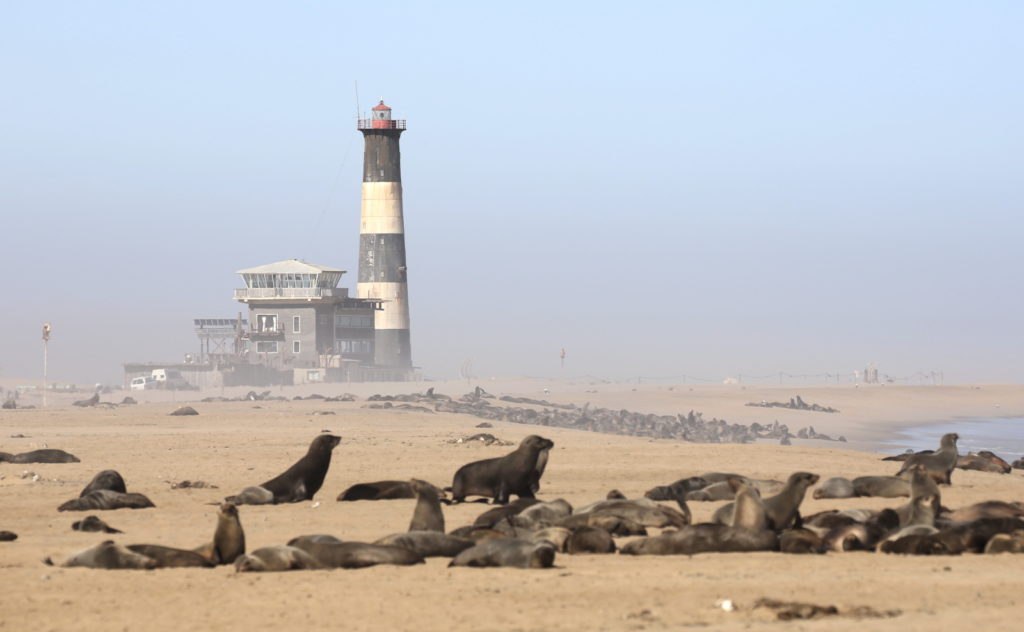
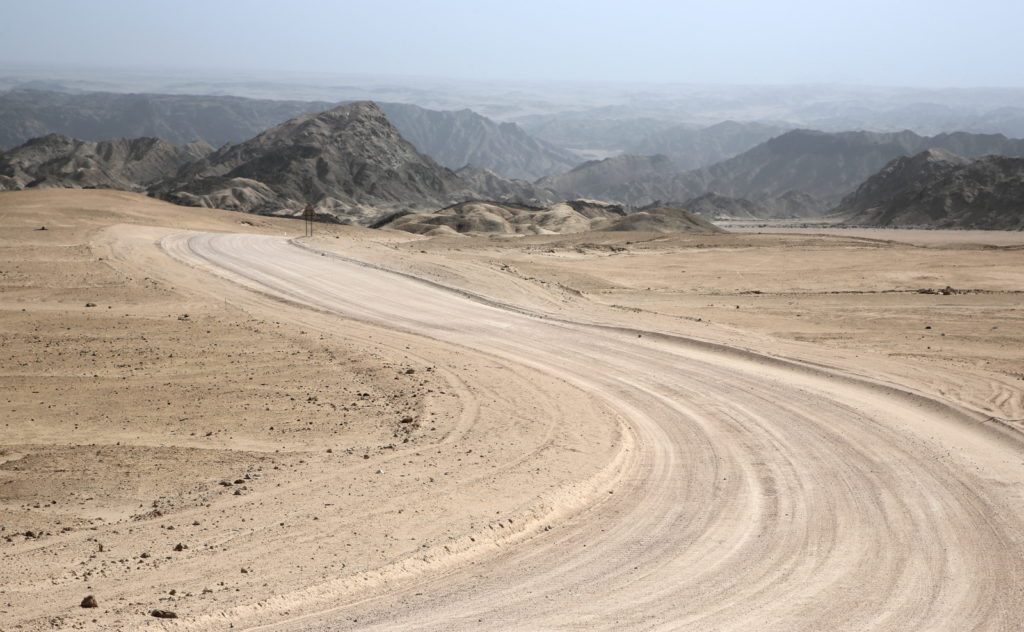
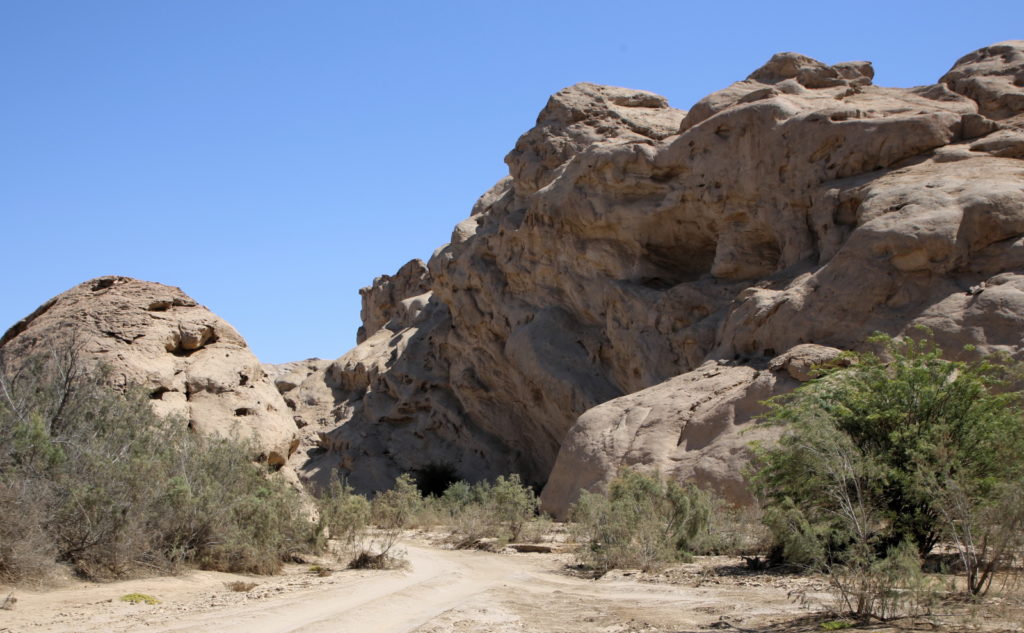
If you do have a full day available to explore, you will not find a tour that has this much variety anywhere else.
While the pace of the tour is very relaxed, the surroundings change often and drastically. Imagine seeing a bustling harbor town, the beach, lighthouses, mudflats, salt processing lakes, dunes, gravel plains, a river canyon, an oasis, pre-historic plants, little Germany and a coastal highway all in one day. Lunacy, right? Add some wildlife and a rich history and wrap that up in an envelope of comfortable off road transport with a private guide, and you will start to realize why people are raving about this tour. The following attractions are all waiting for you:
Walvis Bay Lagoon
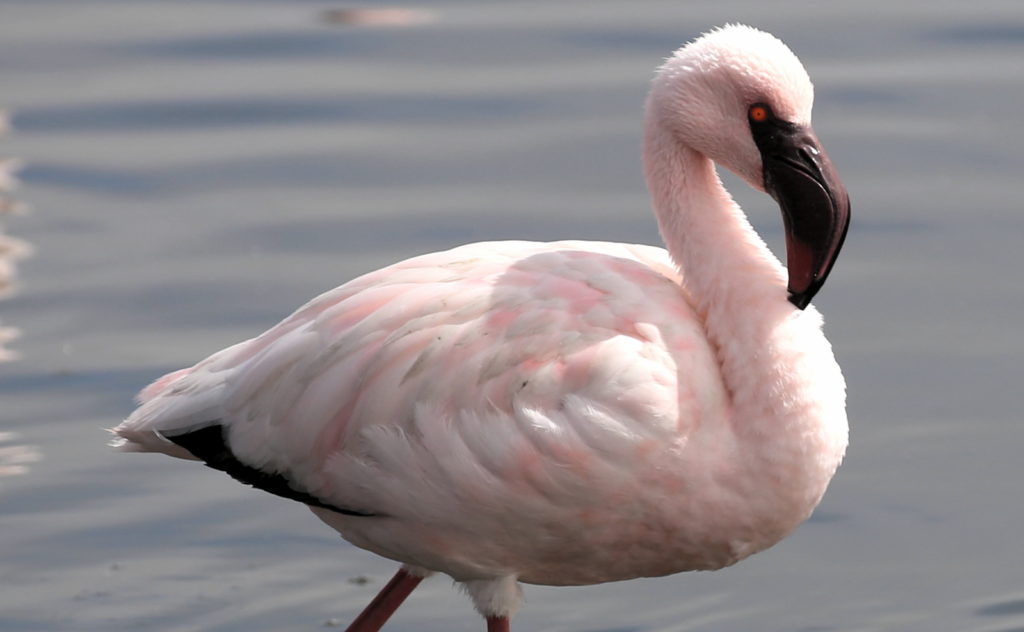
Walvis Bay harbor has the only deep water port in Namibia, an international airport capable of landing any plane ever made, very good rail and road connections to the interior of Namibia and beyond. As such the town is a bustling hive of activity.
A little off to the side of all this activity you will find the lagoon. Declared a RAMSAR nature preserve, the entire wetlands is teeming with wildlife. Along the edge of the lagoon there is ample parking and a walkway from which to take a minute and soak up the peace and quiet of this landscape. The lagoon sets the mood for the rest of your tour. Even though the day is packed with activities, take as long as you want here, or anywhere on your tour. If it’s foggy, don’t worry, we pass the lagoon again closer to lunchtime, giving it time to clear.
Walvis Bay Salt Holdings Pty. Ltd.
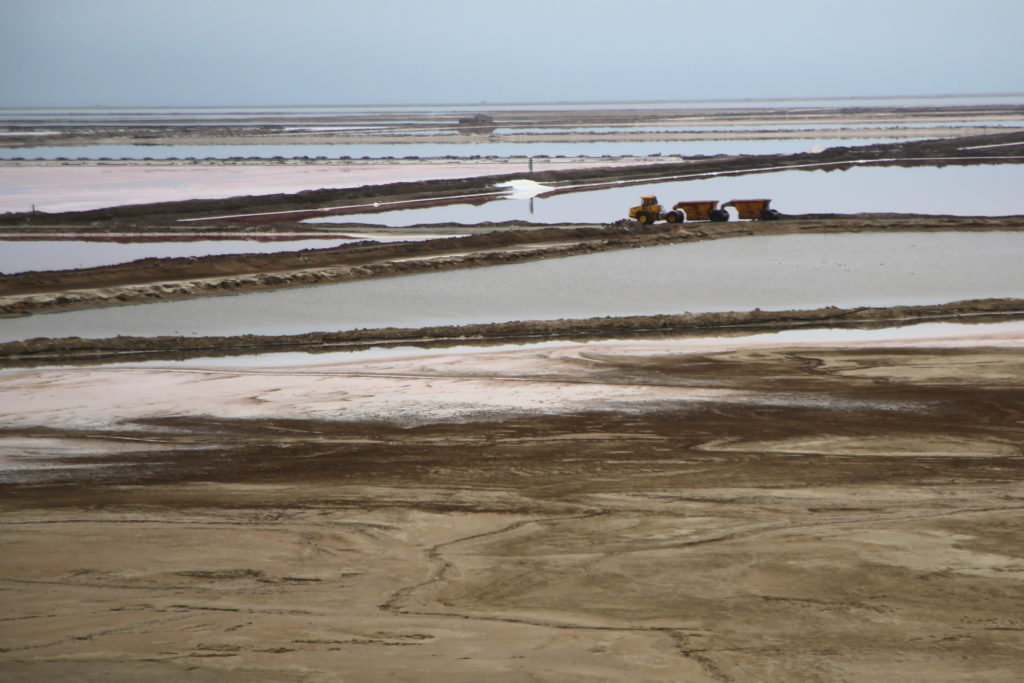
Producing over 700,000 tonnes of salt annually, with plans to boost that to 1,2 million tonnes per year, Walvis Bay Salt Holdings is a big operation. Why is it listed on a tour of Walvis Bay? Well, it’s big… so big, in fact that there is no avoiding it when one leaves town to the South. The plant is quite beautiful, and blends fine with the surrounding landscape. Salt is extracted from normal sea water by the slow process of evaporation, requiring immense shallow lakes for the water to dry out in. These lakes or “pans” are laid out in geometrical regularity.
An interesting feature of the sea water from here is that it turns a bright pink when highly concentrated. The regular shapes of the pans and the colors makes for some nice photos. From the top of the dune closest to the processing plant you have a bit of height to get nice shots like the one above.
The pans with less concentrated sea water is also a favorite hangout for many bird species. In between all these pans is a winding salt road that goes to the Ocean, and from there to Pelican Point. Along this road there is ample opportunity to photograph the pink lakes, salt and birds from up close.
Pelican Point and Shipwreck
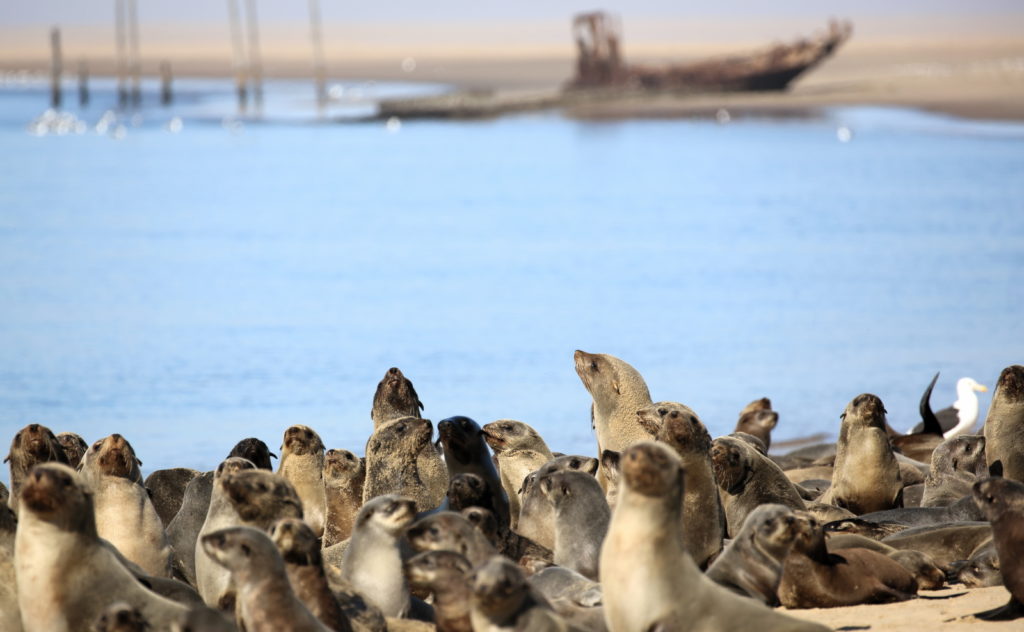
The way to Pelican Point consists of a collection of small landscapes. The mudflats just after the Salt processing works is home to large flocks of Flamingo. Mudflats have the annoying feature of being treacherous to drive over, so the Flamingo along the mud flats are out of reach.
At the North wall of the Salt Processing works, you have the chance to get some pictures of the Flamingo up close, as well as the occasional Black Backed Jackal, too. From the North retaining wall, we follow the remnants of a road that was built in an attempt to stop coastal erosion turning Pelican Point into an island.
A big draw is the Cape Fur Seal colony at the point. Over the years this colony has grown quite a bit, with the furthest reaches of the colony now close to the shipwreck of the Norwegian whaler in the background of the photograph above.
Lighthouse of Walvis Bay

The lighthouse of Walvis Bay has been iconic landmark visible in the landscape around Walvis Bay since 1932. The tower is cast iron, and the unique color scheme was to aid visibility during fog. Next to the tower is a boutique hotel, the Pelican Point Lodge. Access to the lodge is guests only. Around the landmark of the Lighthouse is the rest of the massive seal colony, more than a hundred thousand strong!
What is clearly noticeable to anyone with a bit of a nautical background is that the lighthouse is not built on the tip of the sand spit, where it would warn passing ships. This is because the sand spit is growing continuously. When constructed, the lighthouse was on the tip of the sand spit. Being a little bit difficult to move, it was more prudent to add radar reflectors on the tip as the sand spit grew. You will be amazed at the size of the seal colony and sand spit with a relaxed drive around the sand spit. There are a few choice spots for photographs in this landscape, of course.
On our way back to Walvis Bay we visit a few more choice landscapes like the “Donkey Bay” or, as it is internationally known “Skeleton Bay”. This is a favorite spot for surfers when there is a storm at sea creating massive swell.
Dune Belt
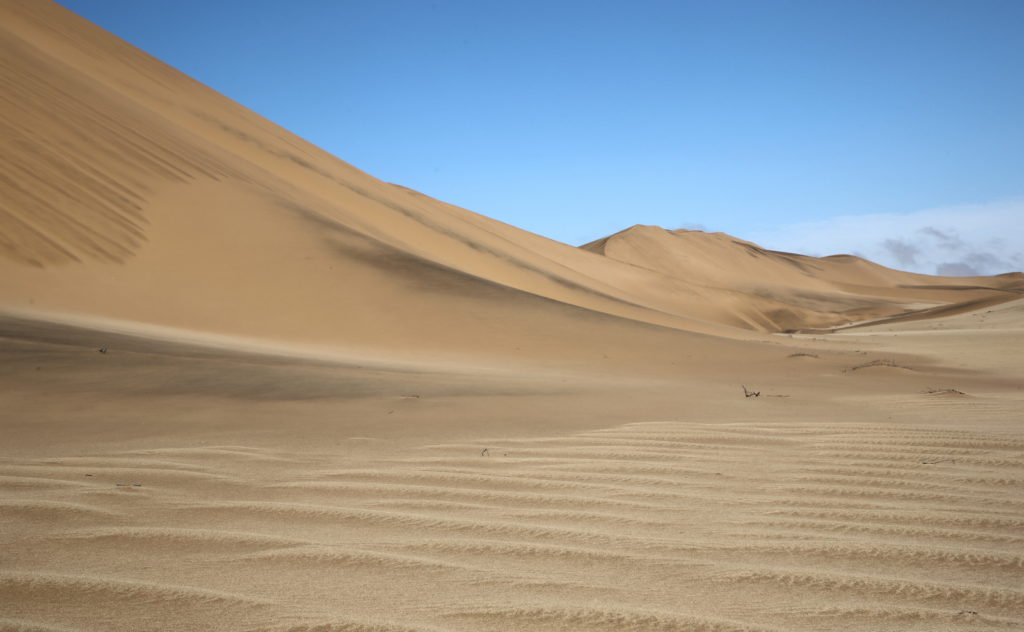
South of the Kuiseb river there is a Dune sea stretching all the way to Luderitz and Sossusvlei. The Kuiseb river changes the landscape dramatically, dividing the landscape into dunes and gravel plains. At the mouth of the Kuiseb river the dunes are generally contained in the banks of the river. North of the C14 highway leaving Walvis Bay, the dunes are stretched out in a thin strip called the “Dune Belt”. This “Dune belt” stretches all the way to the Swakop river, and then there are no more dunes.
Leaving Walvis Bay the landscape changes from beach to desert. On the way past Dune 7 you will have the opportunity to see the “Bird Paradise”. The fresh water lakes at the paradise is formed by the waste water of Walvis Bay being pumped into the desert. The Flamingo love it, and there are a few good photo opportunities of the landscape with contrast between the green reeds and the surrounding dunes. Along the C14 is the railway track as well as the power lines supplying Walvis Bay.
Near to Dune 7 is Dune 7 Adventures. They offer quad biking tours into the dune belt. Dune 7 Adventures makes some pretty good coffee and have tidy toilet facilities. In the dune belt you can climb the dunes to take in the surrounding landscape. Your guide will gladly accompany you, and point out some of the landmarks from the vantage point of the top of the dune.
The untouched dunes of the belt has some real “Lawrence of Arabia” feeling to them, and you can take amazing photos of them. This belt has served as location for a few movies like 10,000 BC and Flight of the Phoenix, among many others. For the most part you can watch the dunes go by as the landscape unfolds on the very nice tarred road to the Swakop river. At the Swakop river the dune belt is left behind, and the landscape changes to gravel plains.
Moon Landscape in the gravel plains
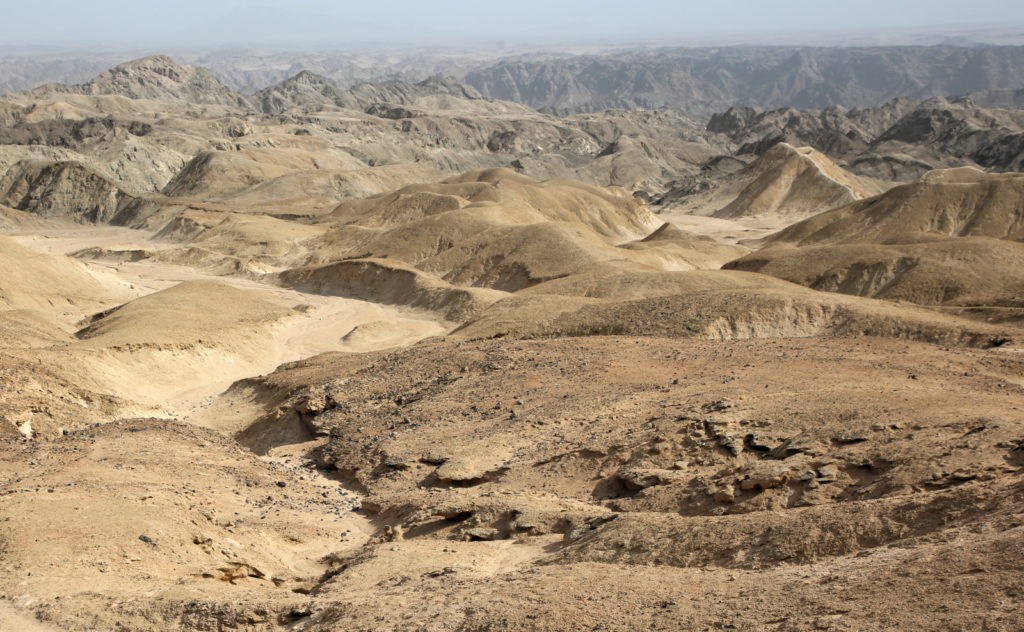
In the 1960’s the Welwitchia trail that was laid out in an effort to boost environmental awareness of this hyper-arid landscape. You will stop at some of the locations marked on this trail, too. The lichen and other flora that grow in this region is especially well adapted for this hyper-arid climate. Apart from the occasional bug, there is no wildlife in this area. Cutting through this landscape is the Swakop river, and it carved a magnificent canyon in the sedimentary rocks.
From the lookout points on the edge of the canyon looking in, the landscape already looks a bit like the surface of the moon with it’s complete desolation and bare peaks. The best part of this tour is that we slowly drive into this landscape to take it all in! Compared to the badlands in Arizona, the form and color of this canyon is breathtaking. Photographers from around the world has asked why landscape is not advertised more, it’s that great.
Goanikontes Oasis

Goanikontes is an oasis in the Swakop river from before Europeans arrived. Officially established in 1848, it was used to grow food for the population of Swakopmund and the German troops. Recently under new management, the facilities at Goanikontes are world-class. The historic farm building houses a small curio shop, and snakes and scorpions in aquariums. They provide free wifi in the restaurant area.
The open air restaurant with it’s amazing atmosphere is where you have lunch. The menu is pretty diverse with something for everyone. Liquid refreshments here include good coffee and beer “As cold as your mother-in-law’s heart”, as stated on one of the signs next to the road. There are massive trees providing shade and for the tables, and perch for the many small bird species that live in the Swakop river. The oasis also has an eclectic collection of farm animals, some roaming freely. The caged ones you can see for free, if you ever wanted to see a Alpaca, pig or goat up close.
There are a few other attractions at this location that include classic cars and an artificial lake. On a side note, this place has good accommodation and activities if you are planning a holiday stay over at the coast.
The Swakop Riverbed
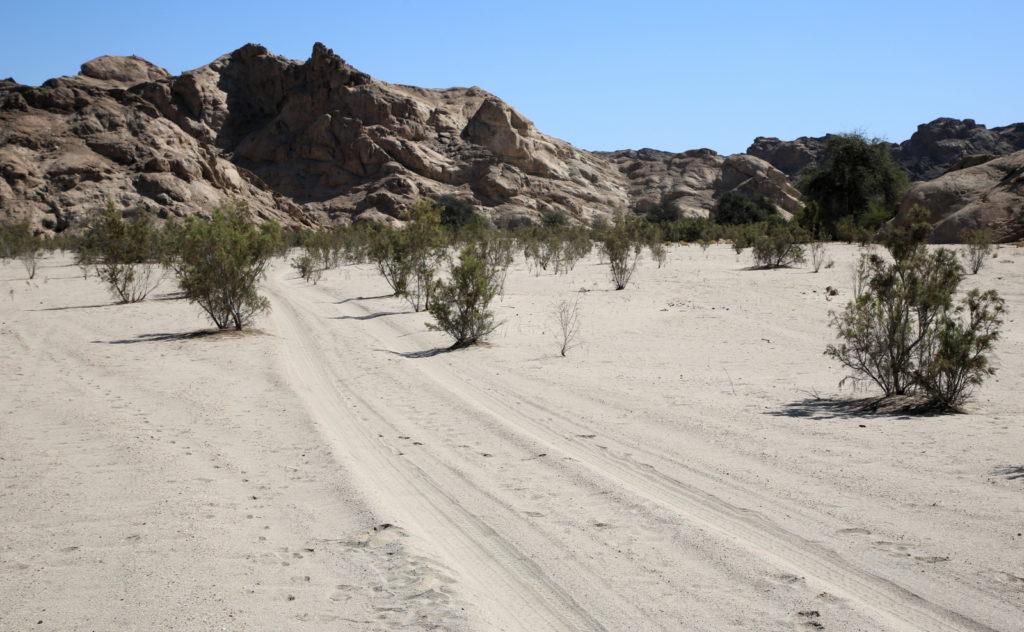
Leaving Goanikontes you will see some more of this landscape. The road leaving Goanikontes in the direction of the Spitzkoppe was used in Mad Max 4. You have as much time as you like to take photos here and compare to see what they added with CG. Exploring a little along the road before turning off the road for some 4×4 driving between the rock formations along a track back down to the river bed. The rest of the early afternoon cruise will be up the riverbed to reach the Welwitchia plains.
This cruise is a geologist’s dream! The rock formations vary so much in terms of make up and color that it is amazing. The textures are gritty and varied, as well as the out of this world feel of the landscape itself. With underground water there is quite a bit of vegetation along the sandy track. With a bit of luck you might see some wildlife. Most common here is Ostrich, but small antelope and baboons have been spotted on occasion.
While the track is sandy, it’s flat and there is not too much bouncing around involved. Your private guide will show you a few named spots along the way. There are some privately owned farms along the riverbed in the municipal area that we steer clear of. To reach the road crossing the Swakop river canyon and leading to the Welwitschia plains, we have to cross over into the Namib-Naukluft park.
Welwitschia Plains
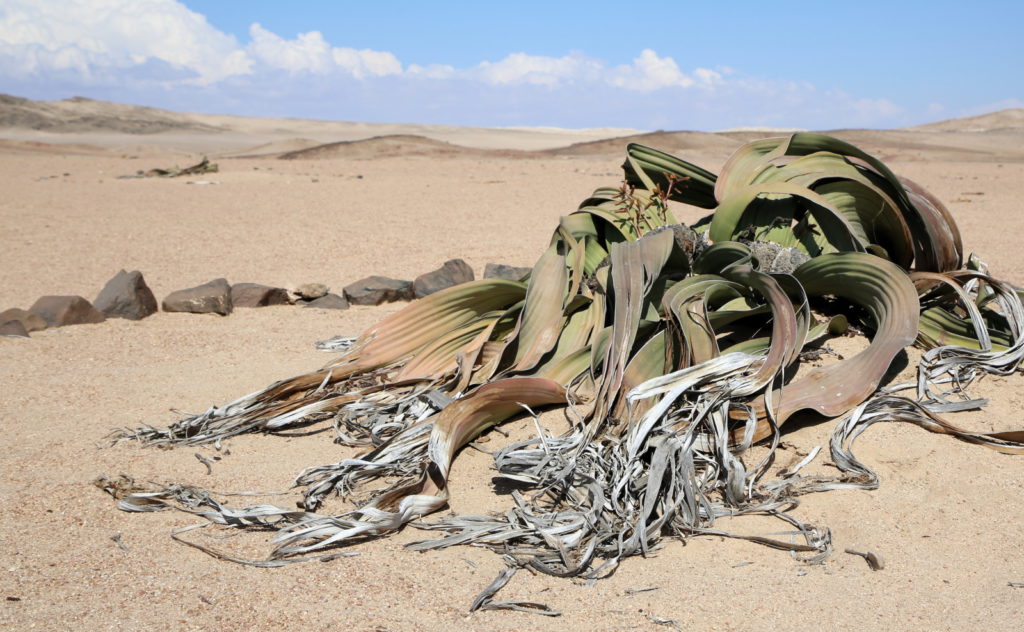
The Welwitschia Miriabilis likes to hang out in places that are quite remote, and dry. This plant is a true ancient, lacking many of the features of modern plants. The road up to the plains leave the Swakop river canyon behind. From the high plains you will have a good vantage point over the canyon again. This can’t be mentioned enough, the landscape here is again vastly different from anything else so far. Welwitschia is a long lived plant, with the larger specimens of the Welwitschia have been alive from before the dark ages.
The fields serve as a turning around point for your tour, and the tour back-tracks through the Swakop river once more to get to the Uranium mine road. Unfortunately, the road there is usually badly corrugated, like many of the roads in Namibia. Sit back and enjoy the “Namibian massage” while the landscape unfolds from canyon to flat gravel plains again. The road is fairly short and over in a few minutes. Ear plugs will be provided if you feel you need it.
One last stop in the desert is an abandoned iron mine at the junction of the Welwitschia road and the Uranium mine road. How people survived in this hostile landscape is simply amazing. Once on the tarred road the journey to Swakopmund is calm again.
Swakopmund
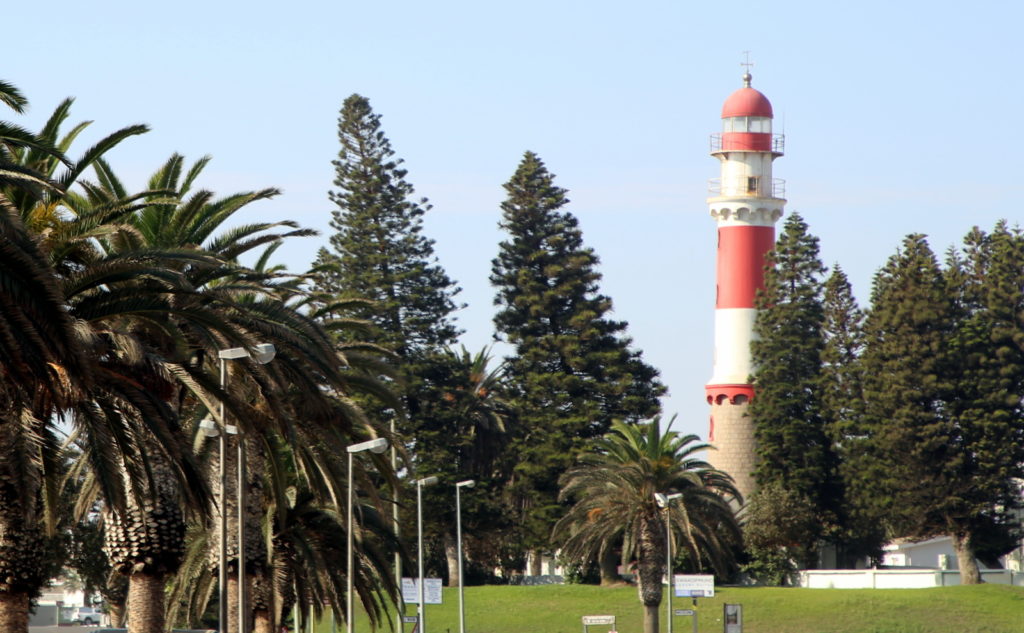
No visit to the coast would be complete without a visit to Swakopmund. Driving by the historic buildings and landmarks of this distinctly German town offers you the opportunity to learn about how life was back in the late 1800’s when this area was settled. You will be shown a few landmarks around Swakopmund, which include the Lighthouse, Jetty and Mole. There is more than enough time to soak up a little of the atmosphere of this touristy town before heading back to Walvis Bay.
Coastal Highway
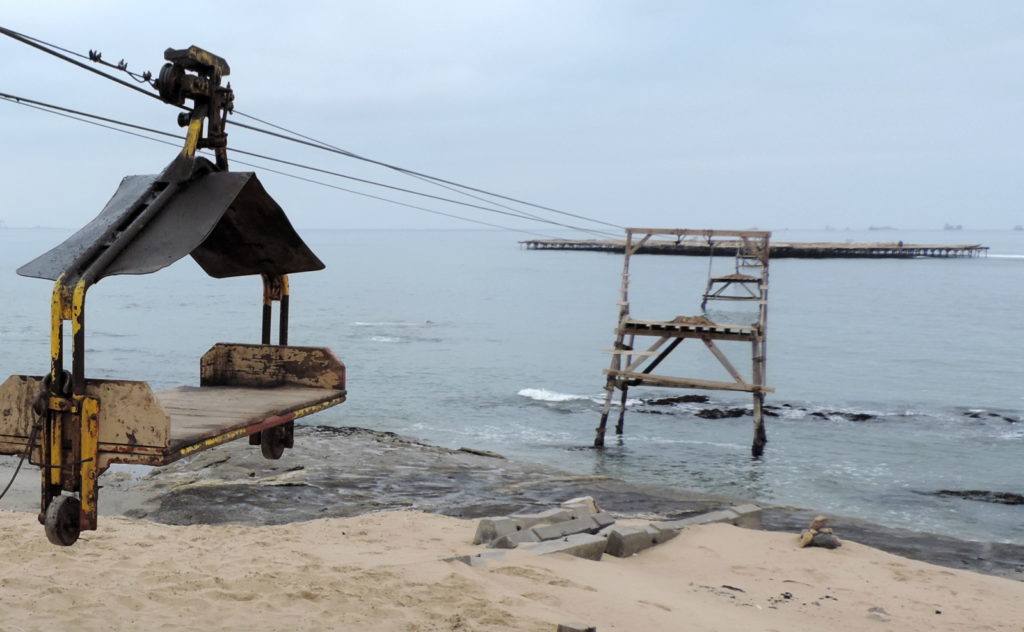
The last 30 km of the B2 highway that connects Walvis Bay with Johannesburg in South Africa runs in between the ocean and the dune belt. This stretch of road has a couple of really beautiful spots. As it will be nearing sunset the light for photos will be great. Near Swakopmund there is usually a bit of paragliding going on, and nearer to Swakopmund the bird island is quite an interesting feature from the 1930’s. Along the road you also have Longbeach and Dolphin beach settlements.
Details
- Duration: 8 hours
- Activity level: Moderate to relaxed
Inclusions
- Cool Mineral water, still or sparkling
- Free pickup in Walvis Bay or Swakopmund
- Private, air conditioned transport
- Local guide
Optional Extras
- Food For the tour
- Special or alcoholic drinks for the tour
- Pickup in the harbor, at your ship
Pickup Services
You will only get the best service at Awesome Chapters:
- Free in Walvis Bay or Swakopmund:
- Your adventure starts at your accommodation because your private tour guide will pick you up with the tour vehicle.
- Time:
- Contact us for free help in picking the best time. As this is an all day long tour, earlier is better.
- Your pickup is fixed during the booking process.
- Cruise liners:
- If you are arriving on a cruise liner, you have the option of being collected you from the ship, inside the harbor gates.
Booking – Email
If you are interested in this tour, you are welcome to contact us for some human interaction. The booking will be made for you with the information from our chat. We love hearing from you, so even if you do not want to book the tour, and just want some more information, you are still welcome to drop us an email.
Alternatively, drop us a line on the contact form below and we will come back to you!
